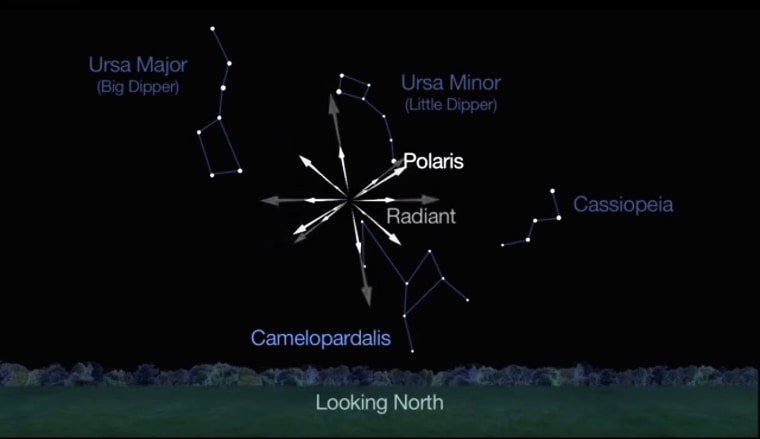If you're an East Coast insomniac or a late-night partier in another U.S. timezone, have I got a celestial treat for you! Tonight at approximately 3:20am EDT, the Earth will pass through the "debris trail" of Comet 209P/LINEAR (discovered in 2004) resulting in a meteor shower with up to 400 meteors an hour at its peak.
As I've mentioned before on this blog, you can think of comets as something akin to a dirty snowball. As they approach the inner Solar System, they get heated by the Sun and they start to sublimate, often leaving gas and dust particles in their wake -- like Pig Pen. These particles continue to orbit the Sun along the comet's path, just at speeds much slower than the comet itself, to the point where sometimes they are strewn out across millions of miles along the comet's orbit. If Earth's orbit and the comet's orbit intersect, the dust particles enter our atmosphere as meteors, a.k.a. shooting stars, and we call it a meteor shower.
The meteor shower tonight is exciting for several reasons:
- It's the first time Earth will cross the orbit of this particular comet, which means there should be the maximum number of dust particles in its path that could potentially turn into meteors. (Comet 209/LINEAR orbits the Sun roughly every five years so since 2004 it's replenished its orbit with debris at least twice.)
- Astronomers studying the comet say that although it doesn't seem as dusty as some other comets, the dust particles could be bigger on average. The bigger the dust particle (or even rock), the brighter it will be as it burns up upon entering Earth's atmosphere.
- Earth's north pole will be plowing through the debris so the meteors will all appear to be coming from the north. However, that also means you don't need to have a clear view of the North Star in order to see them as they will appear to "rain down" in all directions.
As usual, Phil Plait explains all the details expertly, so head over to his post for how to best see the show tonight. Weather-wise, I'm afraid the Northeast is out of luck, but it looks like parts of the South, Midwest and California are in luck.
Have fun and report back!
